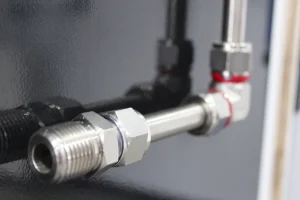A reliable fire alarm system is one of the most important investments a commercial property can make, and the difference often comes down to thoughtful design and precise execution. In this guide, you’ll learn how each component works together, where devices should be placed, and which codes and standards shape a compliant system. We’ll also explore addressable technologies, integration with building automation, and the testing routines that keep everything performing as intended. For organizations seeking expert support, partners like Forbel can help navigate complexity from planning through commissioning. By the end, you’ll understand how strategic choices in Fire Alarm Installation translate into faster detection, clearer notifications, and less downtime.
Key Components That Make Up a Commercial Fire Alarm System
A commercial fire alarm system revolves around the fire alarm control panel (FACP), which serves as the system’s command center. Initiating devices such as smoke detectors, heat detectors, duct detectors, and manual pull stations report abnormal conditions to the panel. Notification appliances—including horns, speakers, strobes, and chimes—prompt occupants to evacuate, while annunciators provide responders with quick visual summaries of system status. Supervisory and trouble signals monitor aspects like sprinkler valve positions, tamper switches, and wiring integrity. Power supplies, batteries, and sometimes generators ensure continued operation during outages, and communicators (cellular or IP) link the system to central monitoring.
Core Devices and Their Roles in a Unified System
Traditional “conventional” systems group devices by zone, while modern addressable systems assign a unique identifier to each device to pinpoint events more precisely. Signal line circuits (SLCs) carry addressable communications, whereas notification appliance circuits (NACs) deliver power and control to horns, strobes, and speakers. Carbon monoxide sensors may be integrated or standalone, depending on local requirements and building risk profiles. Advanced detectors offer drift compensation to maintain sensitivity as dust accumulates, reducing nuisance alarms and maintenance calls. The result is a cohesive, layered architecture that not only detects and alerts but also supervises infrastructure, safeguards power continuity, and supports first responders with actionable information.
Strategic Detector and Panel Placement for Full Coverage
Achieving comprehensive coverage requires a tailored approach based on building layout, occupancy type, and environmental conditions. Smoke detector spacing typically follows recognized standards for ceiling heights and airflow patterns; high ceilings, sloped surfaces, and open atriums may demand closer spacing or additional sensors. Heat detectors are suitable for areas where smoke detectors are impractical, such as commercial kitchens or dusty industrial zones, but must be selected for the right temperature class and rate-of-rise characteristics. Duct detectors monitor HVAC systems to prevent smoke distribution; they should be installed where sampling aligns with airflow and maintenance access is safe. Panels and annunciators should be accessible to first responders, often near primary entrances, while remaining secured from tampering.
Coverage Tactics for Complex Spaces
Special attention is warranted for obstructions—beams, shelving, and room dividers can create “dead zones” where smoke may not travel freely. In areas with high air changes, like data centers or laboratories, aspirating smoke detection can provide early warning through continuous air sampling. Door closers, damper controls, and elevator recall interfaces should be coordinated to prevent smoke migration and streamline evacuation. Large facilities benefit from distributed panels with networked nodes, reducing cable runs and improving survivability by segmenting critical circuits. Documented placement maps and device labels should be synchronized with the control panel’s programming, ensuring every detector, module, and appliance corresponds to a clear location for rapid troubleshooting and response.
Meeting Local Fire Safety Codes and Compliance Standards
Compliance begins with understanding which codes apply: NFPA 72 for fire alarm and signaling, the International Fire Code (IFC), International Building Code (IBC), and local amendments enforced by the Authority Having Jurisdiction (AHJ). Prior to installation, you’ll typically submit drawings, calculations, and equipment data sheets for plan review and permitting. Equipment must be listed and labeled by recognized testing laboratories, and all wiring methods should follow the National Electrical Code (NEC) for survivability and separation. Acceptance testing validates device sensitivity, notification audibility and intelligibility (for voice systems), battery calculations, and communication to the supervising station. Clear documentation—record of completion, as-built drawings, and test reports—forms the backbone of ongoing compliance.
Working With the AHJ to Streamline Approval
Successful Fire Alarm Installation projects incorporate early coordination meetings with the AHJ to clarify expectations, inspection steps, and any special local provisions. Phased occupancy frequently calls for interim inspections, so schedules should account for staged testing and temporary measures to maintain life safety. During inspections, demonstrate both alarm and trouble conditions, show annunciator accuracy, and test supervisory signals such as sprinkler valves and tamper switches. If impairments arise during construction or renovations, implement temporary protection measures and post impairment tags per policy. Continual communication and thorough record-keeping reduce project delays, avoid costly rework, and set the system up for a smooth lifecycle of annual inspections.
Benefits of Addressable Alarms for Precise Incident Detection
Addressable fire alarm systems identify the exact device in alarm, trouble, or supervisory, enabling faster location and remediation of incidents. This precision cuts response times significantly—security teams and first responders no longer search entire zones but head directly to the device, room, or floor indicated on the display. In addition, addressable systems support advanced features such as device-level sensitivity adjustments, automatic drift compensation, and robust event logging. Isolator modules and Class A wiring improve survivability by ensuring a single fault doesn’t disable an entire loop. Scalable architecture allows buildings to expand or reconfigure without replacing the entire platform.
Why Addressability Improves Operations and Costs
Beyond detection speed, addressable technology reduces nuisance alarms by allowing targeted investigation and maintenance of specific devices. Facility teams can diagnose intermittent issues remotely, schedule device cleaning or replacement, and prove corrective actions with detailed logs. When integrated with graphical workstation software, floor maps display real-time device status, aiding training and incident management. Many service providers, including Forbel, deploy standardized programming templates and labeling protocols that promote consistency across campuses. Over the system’s life, these efficiencies translate into lower service costs, less downtime, and improved occupant confidence.
Integrating Fire Alarms With Building Automation Networks
Fire alarm systems frequently interact with building automation platforms, but safety leads the design philosophy: the fire system must operate independently and reliably, with carefully controlled interfaces. Typical integrations include HVAC shutdown, smoke control sequences, elevator recall, door release for egress, and mass notification. In many jurisdictions, these sequences are tested under the oversight of the AHJ with written cause-and-effect matrices. Data exchange to a BAS may occur via BACnet or other gateways, but one-way communication from the fire system to the BAS is common to preserve life-safety priority. Cybersecurity and network segmentation are critical to prevent non-life-safety traffic from affecting the alarm system.
Practical Integration Points That Add Value
A thoughtful Fire Alarm Installation uses relays or addressable control modules to trigger fans, dampers, and other devices without compromising code compliance. Voice evacuation systems can interface with public address for clear, intelligible instructions during emergencies and drills. When integrated with access control, fire alarm events unlock designated doors for rapid egress while keeping sensitive areas secure where appropriate by code. Facility dashboards can display alarm states and device troubles, helping operators coordinate with security and maintenance teams in real time. Documentation of dependencies—what triggers what—ensures predictable performance during a crisis and simplifies future upgrades.
Importance of Routine Testing and Maintenance Procedures
Even the best-designed system requires routine inspection, testing, and maintenance to remain effective and code-compliant. NFPA 72 outlines frequencies for visual inspections, functional tests, and device sensitivity checks across weekly, monthly, quarterly, and annual intervals. Batteries should be load-tested, notification appliances verified for audibility and strobes for visibility, and voice systems for intelligibility. Detectors in dusty or humid environments may need more frequent cleaning or replacement to prevent false alarms and performance drift. Accurate records—logbooks, digital reports, and service tags—prove compliance and highlight recurring issues.
Building a Sustainable Maintenance Program
A maintenance plan aligned with the original Fire Alarm Installation documentation streamlines scheduling and minimizes surprises. Train staff to recognize key indicators—trouble lights, supervisory signals, and panel messages—so minor issues are reported before they become impairments. Service agreements with qualified providers can include guaranteed response times, software backups, and periodic program audits to catch mislabeling or outdated configurations. During renovations, coordinate temporary protection, conduct post-construction testing, and update as-built drawings to reflect device relocations. A disciplined, data-driven approach ensures every detector and circuit performs when it matters most.
How Proper Installation Reduces Risk and Response Time
Risk reduction starts with design accuracy and continues through neat, labeled wiring, correct device mounting, and thorough commissioning. When detectors are placed according to airflow and ceiling geometry, the system senses hazards earlier, leading to quicker alarms and more time for safe evacuation. Clear annunciation and accurate device descriptions remove guesswork for building staff and responders, accelerating on-scene decisions. Proper notification design—horn/strobe intensity, speaker layout, and intelligible messaging—ensures occupants understand instructions and move decisively. Survivable pathways and fault-tolerant circuits keep critical functions operating even when cables are damaged.
Turning Good Design Into Real-World Performance
The operational dividend of quality installation is measurable: fewer nuisance alarms, targeted maintenance, and better incident outcomes. Integrated cause-and-effect programming means elevator recall, door release, and HVAC shutdown sequence correctly, preventing smoke spread and bottlenecks in egress routes. Regular drills informed by system data help teams refine response, and insurers often recognize these controls with favorable terms. Experienced partners such as Forbel bring field-proven standards, rigorous testing protocols, and meticulous documentation that shorten learning curves for facility teams. In day-to-day operations and in emergencies, disciplined installation choices translate directly into reliability, clarity, and faster intervention.






More Stories
Understanding Grip Ring Fittings for Secure Industrial Piping Connections
Why SEO Experts Advise Against Buying Reviews
BTCC.COM: Navigating the World of Leveraged Crypto Investments